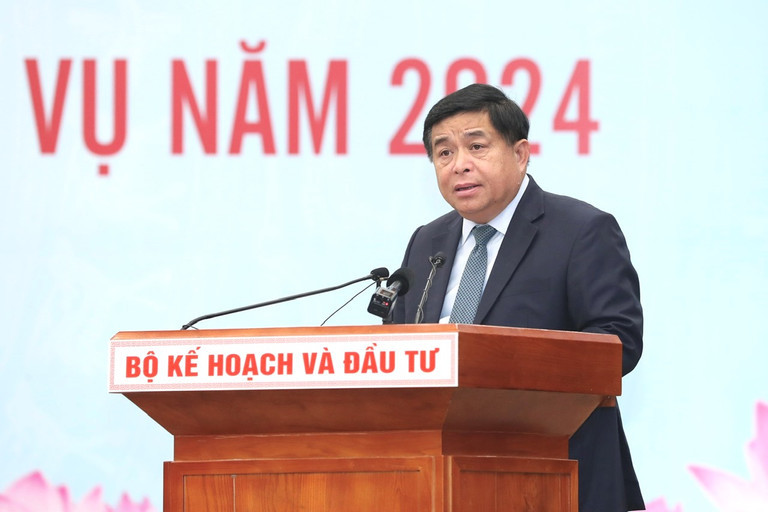
Citing the most outstanding achievements gained in 2023, Minister of Planning and Investment Nguyen Chi Dung said Vietnam had stopped the spread and fragmentation of domestic investment made just for local benefit and reserved resources for large works and projects, such as expressways, inter-provincial highways and coastal roads, creating ‘iron fists’ for infrastructure development
The number of target programs initially designed for 2011-2015 was cut to 21 in 2016-2020, and there are now only three national target programs for 2021-2025.
The number of projects using state budget in 2016-2020 was cut to below 5,000 in 2021-2025. It is expected that Vietnam will have 3,000 kilometers of highways by 2025 and 5,000 kilometers by 2030.
In development planning, the number of plans has been cut from 20,000 plans to 140, including 111 national plans and 39 technical and professional plans; and from 50 plans at provincial level to one. Market rules helped to cut 3,000 product development plans, which has helped remove thousands of required business conditions called ‘sub-licenses’.
According to Dung, Vietnam’s GDP growth rate of 5.05 percent in 2023 was lower than expected, but it was high enough to place Vietnam among the fastest growing countries in the region and the world. In 2023, many localities continued to gain positive results in economic growth and investment attraction such as Quang Ninh, Bac Giang, Hai Phong, Nghe An and Ha Tinh.
He said that Vietnam’s position in global FDI flow has risen. Vietnam attracted $36.6 billion worth of FDI in 2023, up 32 percent. Its enterprises also made outward investments in developed countries, including the US and Canada, and in new industries.
At the same time, Vietnam promoted innovation, the digital economy, green growth, circular economy, and new business fields such as chip manufacturing, semiconductor, and high-tech agriculture; and improved the effectiveness of investment promotion to better exploit opportunities, free trade agreements (FTAs), and strategic and comprehensive strategic partnerships, especially with large economies.
Dung also pointed out shortcomings. At times, state agencies did not have sufficient information and understanding about domestic and international situations in order to timely predict the possible impact on Vietnam’s economy. Some works have been implemented very slowly.
Vietnam’s economy is facing challenges. GDP growth in 2023 was described as positive but 2023 was the third consecutive year Vietnam failed to obtain a targeted GDP growth rate of 6.5-7 percent per annum set in the 5-year period strategy, and 7 percent for the 10-year period.
Vietnam’s GDP per capita in 2023 was $4,284, below the target of $4,700-5,000 set for 2025.
Bank loans remain the major source of capital for the economy and businesses. Meanwhile, there were many problems in the banking sector that needed to be solved, including weak banks, or ‘zero-dong banks’ as called by Vietnamese, and difficulties in the corporate bond market.
Regional and international financial center
Regarding key tasks for 2024, Dung said Vietnam will focus on speeding up disbursement of public investment. It is expected that 95 percent of the disbursement workload will be implemented in 2024. In addition, five regional plans are expected to be submitted for approval in the first quarter this year.
Dung said state agencies need to learn about enterprises’ problems and give advice on how to to remove their difficulties; continue to cut unnecessary business conditions; and improve the business and investment environment. He urged leading enterprises and private enterprises which make outward investment to reach the world market.
In 2024, Vietnam will gather strength to research and build a plan on the establishment of an international center. It is necessary to compile and release a decree on establishing, managing and using an investment support fund with the aim of grasping global redirected investment capital flow.
The other tasks include maximizing the effectiveness of the National Innovation Center and local centers, contributing to the development of an innovative and creative start-up ecosystem; accelerate economic restructuring, and renovate the growth model; and build and perfect policies to create new economic models, such as the circular and green economy.
Manh Ha